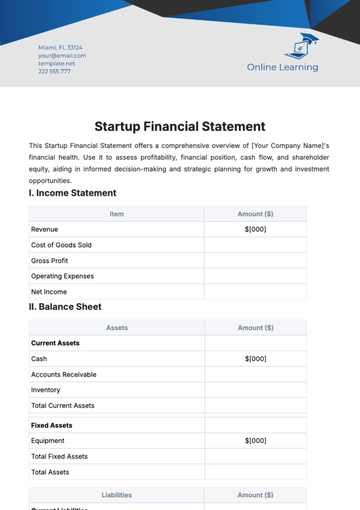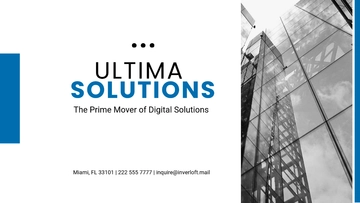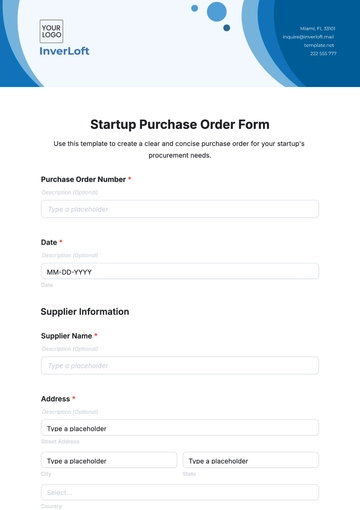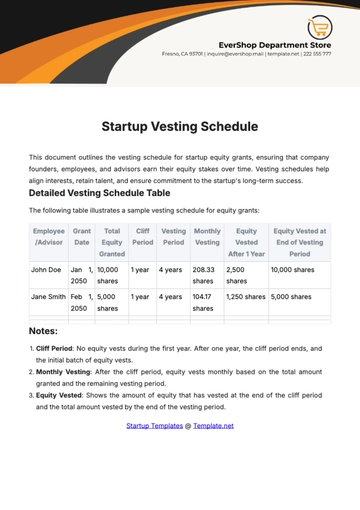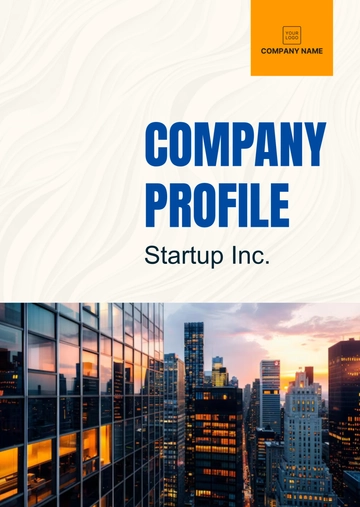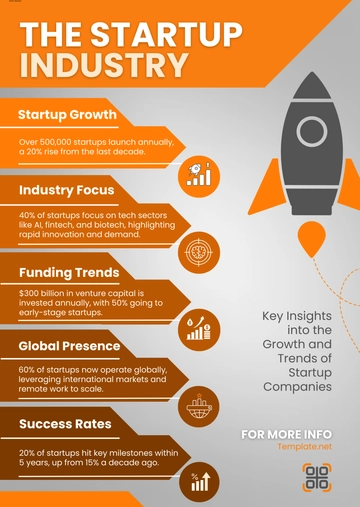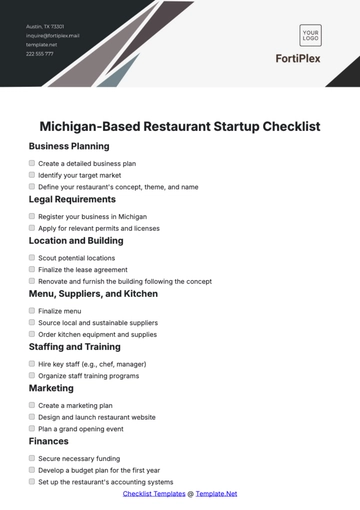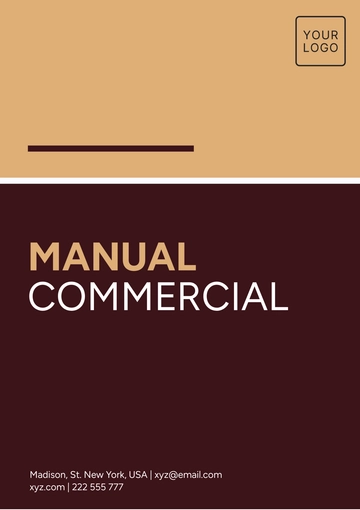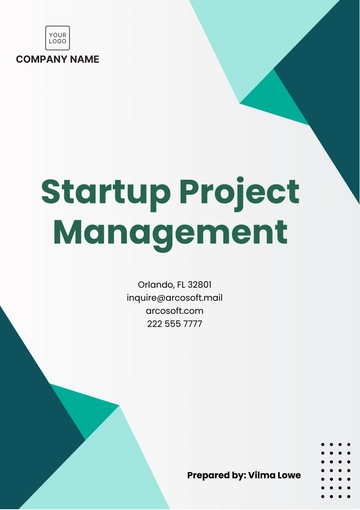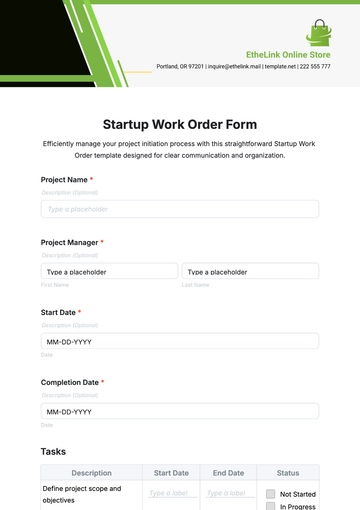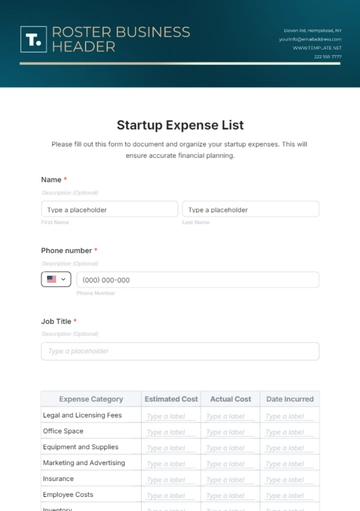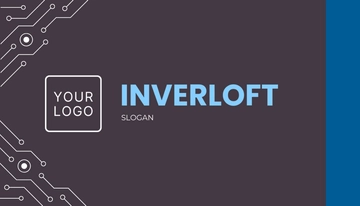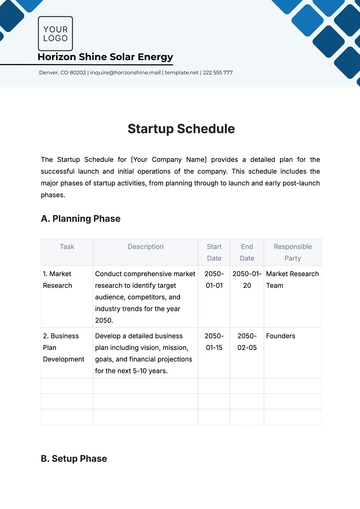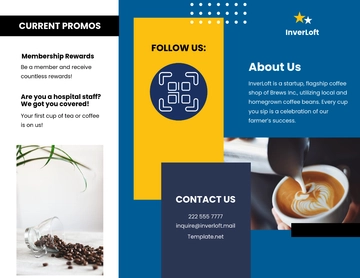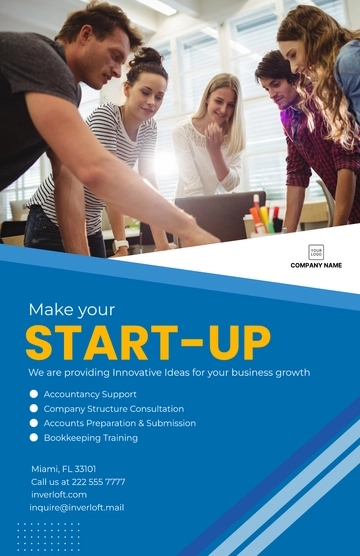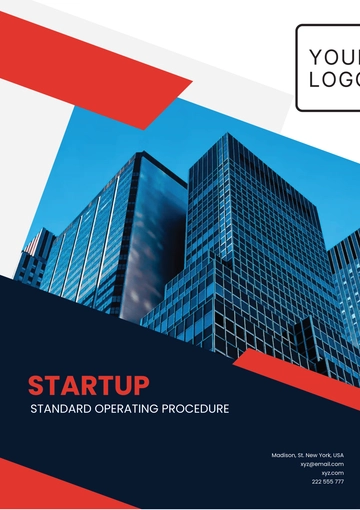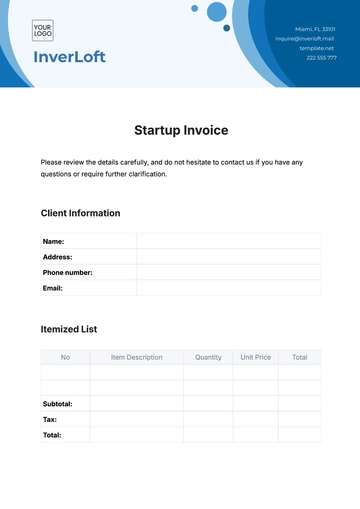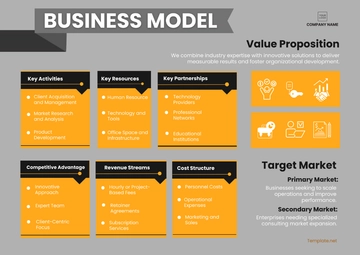Free Startup Business Operation Protocol
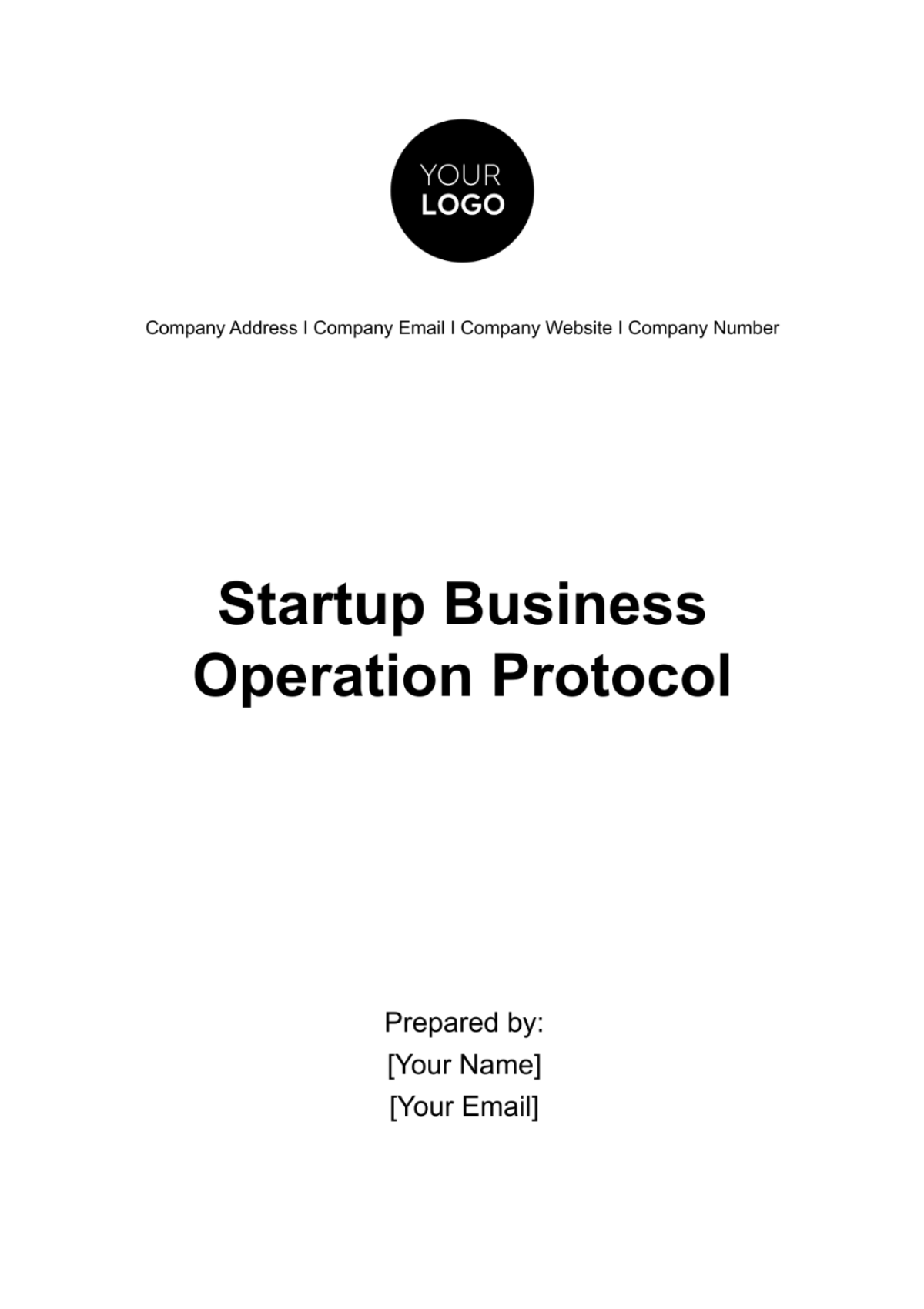
I. Introduction
A. Overview of the Startup Business Operation Protocol
The Startup Business Operation Protocol serves as the foundational document outlining the operational procedures, guidelines, and protocols to be followed within [Your Company Name]. It aims to establish clarity, consistency, and efficiency in all aspects of the company's operations.
B. Importance of establishing operational protocols
Implementing clear operational protocols is essential for ensuring smooth day-to-day operations, fostering a productive work environment, and maintaining consistency across different departments and teams.
Establishing protocols helps in streamlining processes, reducing errors, and minimizing misunderstandings, ultimately contributing to the overall success and growth of the company.
C. Objectives of the protocol
To define roles and responsibilities within the organization
To establish standard operating procedures for various tasks and processes
To ensure effective communication both internally and externally
To comply with legal and regulatory requirements
To mitigate risks and ensure business continuity
II. Organizational Structure
A. Leadership roles and responsibilities
ROLES | RESPONSIBILITIES |
|---|---|
CEO: | The Chief Executive Officer (CEO) is responsible for providing overall leadership and direction to the organization, setting strategic objectives, and making key decisions in consultation with the board of directors. |
COO: | The Chief Operating Officer (COO) oversees the day-to-day operations of the company, ensuring that business activities are executed efficiently and in alignment with the strategic goals set by the CEO and the board. |
Department Heads: | Each department within the organization is led by a department head who is responsible for managing the activities and resources within their respective departments, achieving departmental objectives, and fostering collaboration and cohesion among team members. |
Team Leaders: | Team leaders are responsible for supervising and coordinating the activities of their team members, providing guidance, support, and feedback to ensure that tasks are completed effectively and in accordance with established protocols and standards. |
B. Departmental structure
Sales: Responsible for generating revenue through the sale of products or services to customers, developing sales strategies, and managing customer relationships.
Marketing: Responsible for promoting the company's products or services, building brand awareness, and attracting and engaging customers through various marketing channels.
Finance: Responsible for managing the company's financial resources, including budgeting, financial planning, accounting, and reporting.
Operations: Responsible for overseeing the day-to-day operational activities of the company, including production, logistics, supply chain management, and quality control.
Human Resources: Responsible for managing the organization's human capital, including recruitment, training, performance management, and employee relations.
Information Technology: Responsible for managing the company's technology infrastructure, including hardware, software, networks, and cybersecurity.
C. Reporting hierarchy
Position | Reports To |
|---|---|
CEO | Board of Directors |
COO | CEO |
Department Heads | COO |
Team Leaders | Respective Department Head |
III. Operational Procedures
A. Onboarding process for new employees
HR conducts orientation sessions to introduce new employees to company policies, culture, and procedures, providing them with the information and resources they need to succeed in their roles.
IT ensures that new employees have the necessary tools and technology access to perform their duties effectively, setting up accounts, permissions, and equipment as required.
Department heads assign mentors or buddies to new hires to help them acclimate to their roles, answer questions, and provide guidance and support as needed.
B. Daily operational tasks and routines
Each department maintains a daily task list outlining priorities, deadlines, and responsibilities, ensuring that team members are aware of their assignments and can plan their work accordingly.
Regular team meetings are held to discuss progress, challenges, and updates, providing an opportunity for team members to share information, collaborate on projects, and address any issues or concerns that arise.
Project management tools such as Asana or Trello are utilized to track tasks and projects, enabling teams to organize work, assign tasks, and monitor progress in real-time.
C. Workflow management and task delegation
Clear delegation of tasks with defined roles and responsibilities ensures that work is distributed effectively and efficiently, maximizing productivity and minimizing duplication of effort.
Regular review and adjustment of workflows are conducted to optimize efficiency, identify bottlenecks or inefficiencies, and implement improvements as needed to streamline processes.
Workflow automation tools such as Zapier or Microsoft Power Automate are utilized to automate repetitive tasks, reduce manual effort, and improve workflow efficiency.
IV. Communication Protocols
A. Internal communication channels
CHANNELS | DESCRIPTION |
|---|---|
Slack: | Slack is used for real-time messaging and team collaboration, enabling employees to communicate quickly and efficiently, share files, and collaborate on projects regardless of location or time zone. |
Email: | Email is used for formal communications and documentation, providing a record of correspondence and facilitating communication with external stakeholders such as clients, partners, and vendors. |
Weekly department meetings: | Weekly department meetings are held to provide an opportunity for face-to-face communication and updates, enabling team members to discuss progress, share information, and address any issues or concerns. |
B. External communication guidelines
Client communication: Direct communication channels such as email or scheduled calls are used to communicate with clients, ensuring timely responses to inquiries, providing updates on projects or services, and addressing any concerns or issues that arise.
Partner/vendor communication: Designated points of contact and clear communication protocols are established for communicating with partners and vendors, facilitating collaboration, and ensuring that expectations are met.
Social media and public relations: Approval process for external communications is implemented to ensure consistency and alignment with company messaging, safeguarding the company's reputation and brand image.
C. Crisis communication plan
Designated crisis communication team: A designated crisis communication team is responsible for managing communication during emergencies, coordinating responses, and ensuring that accurate and timely information is disseminated to stakeholders.
Clear escalation procedures: Clear escalation procedures are established to ensure that urgent issues are addressed promptly and effectively, enabling the organization to respond to crises in a timely manner and minimize potential negative impacts.
Regular training and drills: Regular training and drills are conducted to ensure preparedness for crisis situations, familiarizing employees with their roles and responsibilities, and enabling them to respond effectively in high-pressure situations.
V. Technology Infrastructure
A. Hardware and software requirements
Standardized hardware specifications: Standardized hardware specifications are established for employee workstations to ensure consistency and compatibility, minimizing support issues and maximizing productivity.
Cloud-based software solutions: Cloud-based software solutions are utilized for scalability and accessibility, enabling employees to access data and applications from anywhere, at any time, and facilitating collaboration and remote work.
Regular maintenance and updates: Regular maintenance and updates of software and hardware are conducted to ensure optimal performance, security, and reliability, reducing the risk of downtime and security breaches.
B. Data management and security measures
Data encryption and access control measures: Data encryption and access control measures are implemented to protect sensitive information, ensuring that only authorized users have access to confidential data, and mitigating the risk of unauthorized access or data breaches.
Regular data backups: Regular data backups are performed to prevent data loss in the event of hardware failure, human error, or cyber-attacks, enabling the organization to recover data quickly and minimize disruption to business operations.
Compliance with data protection regulations: Compliance with data protection regulations such as GDPR or HIPAA is ensured to safeguard the privacy and security of personal and sensitive data, mitigating the risk of regulatory penalties and reputational damage.
C. IT support protocols
PROTOCOLS | DESCRIPTION |
|---|---|
Helpdesk support: | Helpdesk support is available to assist employees with technical issues and troubleshooting, providing timely resolution of problems and minimizing disruption to work. |
Ticketing system: | A ticketing system is utilized to track and manage IT-related requests, enabling efficient prioritization, assignment, and resolution of issues, and ensuring that no request falls through the cracks. |
Regular cybersecurity training: | Regular cybersecurity training is provided to employees to raise awareness of cybersecurity risks and best practices, empowering them to recognize and mitigate potential threats, and reducing the risk of security incidents. |
VI. Financial Management
A. Budgeting and forecasting procedures
Annual budgeting process: The annual budgeting process involves input from department heads and the finance team, who collaborate to develop a comprehensive budget that aligns with strategic objectives and financial targets.
Quarterly reviews and adjustments: Quarterly reviews and adjustments are made based on performance and market conditions, enabling the organization to adapt its financial plans and resource allocations in response to changing circumstances.
Long-term forecasting: Long-term forecasting is conducted to inform strategic decision-making and resource allocation, providing insights into future trends and opportunities, and enabling the organization to plan and prepare accordingly.
B. Expense approval process
Clear guidelines and approval levels: Clear guidelines and approval levels are established for different types of expenses, ensuring that expenditures are authorized, justified, and aligned with business priorities and budgetary constraints.
Expense management software: Expense management software is utilized to track and report expenses, providing visibility into spending patterns, enabling timely approval and reimbursement, and facilitating compliance with expense policies and regulations.
Regular audits: Regular audits are conducted to ensure compliance with expense policies and regulations, identify any discrepancies or irregularities, and implement corrective actions as needed to prevent future issues.
C. Financial reporting timelines
Monthly financial reports: Monthly financial reports are provided to department heads and senior management, providing insights into financial performance, variances against budget, and key metrics, and facilitating informed decision-making and strategic planning.
Quarterly financial reviews: Quarterly financial reviews are conducted with the board of directors, providing an opportunity to assess the organization's financial health, address any concerns or questions, and provide guidance and direction as needed.
Annual financial statements: Annual financial statements are audited by external auditors for transparency and compliance, providing assurance to stakeholders and investors regarding the accuracy and reliability of financial information, and demonstrating the organization's commitment to sound financial management practices.
VII. Quality Control and Assurance
A. Product or service quality standards
Development of quality standards: Quality standards and specifications are developed for products or services, defining the criteria and requirements that must be met to ensure customer satisfaction and regulatory compliance.
Regular quality inspections and testing: Regular quality inspections and testing are conducted to verify compliance with quality standards, identify any defects or deviations, and implement corrective actions to address them and prevent recurrence.
Continuous improvement initiatives: Continuous improvement initiatives are implemented based on customer feedback and industry best practices, enabling the organization to enhance product or service quality, drive innovation, and maintain a competitive edge in the market.
B. Quality control checkpoints
Defined checkpoints: Defined checkpoints are established at various stages of the production or service delivery process, where quality checks are performed to ensure that products or services meet specified standards and requirements.
Quality assurance team: A dedicated quality assurance team is responsible for monitoring and enforcing quality standards, conducting inspections and audits, and implementing quality improvement initiatives to enhance overall product or service quality.
Documented procedures: Documented procedures are established for handling non-conformities and implementing corrective actions, ensuring that issues are addressed promptly and effectively, and preventing recurrence through process improvements.
C. Continuous improvement initiatives
INITIATIVES | DESCRIPTION |
|---|---|
Regular review and analysis | Regular review and analysis of performance metrics are conducted to identify areas for improvement, analyze root causes of problems, and identify opportunities for enhancement or optimization. |
Employee training and development | Employee training and development programs are implemented to enhance skills and knowledge, empower employees to contribute to quality improvement efforts, and foster a culture of continuous learning and improvement. |
Implementation of lean or Six Sigma methodologies | Lean or Six Sigma methodologies are implemented to streamline processes, eliminate waste, and improve efficiency and effectiveness, driving continuous improvement and delivering value to customers. |
VIII. Compliance and Legal Considerations
A. Regulatory compliance requirements
REQUIREMENTS | DESCRIPTION |
|---|---|
Compliance with industry-specific regulations | Compliance with industry-specific regulations and standards is ensured to protect consumers, employees, and the environment, and to maintain the organization's license t |
Regular updates and training | Regular updates and training are provided to ensure awareness of regulatory changes and requirements, enabling employees to remain compliant and avoid potential violations or penalties. |
Collaboration with legal counsel | Collaboration with legal counsel is maintained to assess and mitigate legal risks, ensure compliance with applicable laws and regulations, and resolve legal issues in a timely and effective manner. |
B. Intellectual property protection
Implementation of policies and procedures: Implementation of policies and procedures to protect intellectual property rights, including patents, trademarks, copyrights, and trade secrets, safeguarding the organization's innovations, brand, and competitive advantage.
Confidentiality agreements and non-disclosure agreements: Confidentiality agreements and non-disclosure agreements are used to protect sensitive information and trade secrets, ensuring that confidential information remains confidential and is not disclosed to unauthorized parties.
Regular monitoring and enforcement: Regular monitoring and enforcement of intellectual property rights are conducted to detect and prevent infringement, deter potential violators, and take appropriate legal action to protect the organization's intellectual assets.
C. Contract management and legal documentation
Standardized contract templates: Standardized contract templates are developed for consistent and efficient contract management, reducing the time and effort required to negotiate and finalize agreements, and ensuring that key terms and conditions are addressed.
Documented approval process: Documented approval process for contract review and negotiation is established to ensure that contracts are reviewed by appropriate stakeholders, comply with company policies and legal requirements, and accurately reflect the parties' intentions.
Maintenance of contract records: Maintenance of contract records is maintained to ensure compliance with contractual obligations, monitor contract performance, and provide documentation in the event of disputes or legal challenges.
IX. Risk Management
A. Identification of potential risks
Risk assessment process: Risk assessment process is conducted to identify and prioritize potential risks to the organization's operations, including strategic, financial, operational, compliance, and reputational risks, and to assess their potential impact and likelihood.
Regular review of external and internal factors: Regular review of external and internal factors that may impact business operations, such as changes in market conditions, regulatory requirements, or technology trends, is conducted to identify emerging risks and opportunities and inform risk management strategies.
Involvement of key stakeholders: Involvement of key stakeholders, including senior management, department heads, and subject matter experts, is ensured to ensure comprehensive risk identification and analysis, foster ownership and accountability, and facilitate collaboration in risk mitigation efforts.
B. Risk mitigation strategies
STRATEGIES | DESCRIPTION |
|---|---|
Development of risk mitigation plans | Development of risk mitigation plans for identified risks, outlining proactive measures to reduce the likelihood or impact of risks, such as implementing controls, safeguards, or contingency plans, and assigning responsibilities and timelines for implementation. |
Diversification of business activities | Diversification of business activities to reduce dependency on specific factors or markets, spreading risk across different product lines, geographic regions, or customer segments, and minimizing exposure to external shocks or disruptions. |
Purchase of insurance coverage | Purchase of insurance coverage to transfer financial risks, such as property damage, liability, or business interruption, to insurance providers, providing financial protection and peace of mind in the event of covered losses or claims. |
C. Contingency planning
Development of contingency plans: Development of contingency plans for various scenarios, such as natural disasters, cyber-attacks, or economic downturns, outlining specific actions to be taken in response to emergencies, including communication protocols, resource allocation, and recovery procedures.
Regular testing and updating: Regular testing and updating of contingency plans are conducted to ensure effectiveness and readiness, simulating different scenarios, identifying gaps or weaknesses, and implementing improvements or adjustments as needed to enhance preparedness and resilience.
Communication and training: Communication and training of employees on contingency procedures and roles are provided to ensure awareness and readiness, familiarizing employees with their responsibilities, roles, and procedures to be followed in emergency situations, and empowering them to respond effectively and efficiently.
X. Human Resources Policies
A. Recruitment and selection procedures
Job analysis and role definition: Job analysis and role definition are conducted to identify the knowledge, skills, and attributes required for each position, ensuring that job descriptions are accurate, comprehensive, and aligned with organizational needs and objectives.
Standardized recruitment process: Standardized recruitment process is implemented to ensure fairness, consistency, and transparency in the selection of candidates, including job postings, resume screening, interviews, and reference checks, and compliance with equal employment opportunity laws and regulations.
Equal employment opportunity and diversity policies: Equal employment opportunity and diversity policies are established to ensure fair and unbiased recruitment practices, promote diversity and inclusion in the workforce, and create a culture of respect, acceptance, and equal opportunity for all employees.
B. Performance evaluation process
Annual performance reviews: Annual performance reviews are conducted based on predetermined performance criteria and objectives, providing employees with feedback on their performance, strengths, areas for improvement, and development goals, and facilitating career development and progression.
Regular feedback and coaching: Regular feedback and coaching sessions are provided to support employee development and growth, providing guidance, encouragement, and constructive feedback to help employees improve their performance, overcome challenges, and achieve their full potential.
Performance improvement plans: Performance improvement plans are implemented for underperforming employees, outlining specific expectations, goals, and timelines for improvement, providing support, resources, and opportunities for skill development, and addressing performance issues in a timely and constructive manner.
C. Employee benefits and policies
Competitive compensation and benefits packages: Competitive compensation and benefits packages are offered to attract and retain top talent, including competitive salaries, health insurance, retirement plans, paid time off, and other perks and benefits, ensuring that employees feel valued, motivated, and engaged.
Employee handbook: An employee handbook is developed to outline company policies and procedures, including but not limited to, code of conduct, attendance, leave, performance expectations, and disciplinary procedures, providing clarity, consistency, and transparency in the workplace.
Flexible work arrangements and wellness programs: Flexible work arrangements and wellness programs are implemented to promote work-life balance, flexibility, and employee well-being, accommodating individual needs and preferences, reducing stress and burnout, and fostering a healthy and productive work environment.
XI. Training and Development
A. Initial training for new hires
PROCESS | DESCRIPTION |
|---|---|
Onboarding training | Onboarding training is provided to new hires to introduce them to company policies, culture, and procedures, familiarize them with their roles and responsibilities, and provide them with the knowledge and resources they need to succeed in their positions. |
Job-specific training | Job-specific training is provided to equip new hires with the necessary skills and knowledge to perform their duties effectively, including technical skills, job-specific processes, and tools or software applications, enabling them to contribute to the organization from day one. |
Mentorship programs | Mentorship programs are established to pair new hires with experienced employees who can provide guidance, support, and advice, helping them navigate their roles, address challenges, and develop professionally, and facilitating integration into the company culture and community. |
B. Ongoing professional development opportunities
Continuous learning and professional growth are integral to [Your Company Name]'s culture, fostering employee engagement, innovation, and competitiveness. We recognize the importance of providing ongoing professional development opportunities to our employees, enabling them to stay relevant, enhance their skills, and achieve their career goals. As part of our commitment to lifelong learning, we offer a variety of resources and programs to support continuous growth and development.
Employees are encouraged to take advantage of a diverse range of training and development resources, including workshops, seminars, conferences, online courses, and certifications. These resources cover a wide range of topics, from technical skills to leadership development, allowing employees to tailor their learning experiences to their individual needs and interests. By investing in their professional development, employees can expand their knowledge, acquire new skills, and stay abreast of industry trends and best practices.
Furthermore, [Your Company Name] encourages employees to pursue advanced degrees, certifications, or professional qualifications relevant to their roles and career aspirations. Whether it's obtaining a master's degree in a specialized field or earning industry-recognized certifications, we support employees in their pursuit of higher education and professional credentials. By empowering employees to continue their education and skill development, we not only invest in their future success but also strengthen our organization's talent pipeline and competitive advantage.
C. Skills enhancement programs
Identifying and addressing skill gaps is essential for maintaining a high-performing workforce and driving organizational success. At [Your Company Name], we are committed to helping employees enhance their skills and capabilities through tailored training programs and skill enhancement initiatives. By providing targeted instruction, practice, and feedback, we enable employees to develop the skills they need to excel in their roles and contribute to the company's growth and success.
Our approach to skills enhancement begins with the identification of skill gaps through performance evaluations, feedback, and skills assessments. Once areas for improvement are identified, we develop customized training programs designed to address specific skill deficiencies and development needs. These programs may include technical training, soft skills development, leadership training, or other relevant learning experiences tailored to the individual needs of employees.
In addition to formal training programs, [Your Company Name] encourages employees to participate in cross-functional projects, mentorship opportunities, and collaborative initiatives that promote skill sharing and knowledge transfer across teams and departments. By providing diverse opportunities for skills enhancement, we foster a culture of continuous learning and development, where employees are empowered to grow, adapt, and thrive in an ever-changing business environment. Through these efforts, we aim to build a workforce that is agile, innovative, and capable of meeting the evolving demands of our industry.
XII. Conclusion
A. Recap of the importance of the Startup Business Operation Protocol
The Startup Business Operation Protocol serves as a foundational document that provides guidance and structure for all operational activities within [Your Company Name]. By establishing clear protocols and procedures, the protocol aims to promote consistency, transparency, and accountability across the organization, facilitating efficient and effective operations, and supporting the achievement of business objectives and long-term success.
B. Commitment to regular review and updates
[Your Company Name] is committed to regularly reviewing and updating the Startup Business Operation Protocol to adapt to changing business needs, industry trends, and regulatory requirements. Continuous improvement and optimization of operational processes are essential to maintaining competitiveness, resilience, and sustainability in a dynamic and evolving business environment.
C. Encouragement for adherence to protocols for operational efficiency and success
All employees are encouraged to familiarize themselves with the Startup Business Operation Protocol and adhere to its guidelines and procedures. By working together and following established protocols, we can maximize efficiency, minimize errors, and achieve our collective goals, ensuring the success and prosperity of [Your Company Name] now and in the future.
- 100% Customizable, free editor
- Access 1 Million+ Templates, photo’s & graphics
- Download or share as a template
- Click and replace photos, graphics, text, backgrounds
- Resize, crop, AI write & more
- Access advanced editor
Streamline your startup's daily operations with the Startup Business Operation Protocol Template from Template.net. This indispensable template is fully customizable and editable through our Ai Editor Tool, ensuring your operations are efficient and compliant. Craft protocols that reflect your startup's ethos and operational needs, facilitating smooth and effective management with Template.net.
You may also like
- Startup Agreement
- Non Profit
- Transport and Logistics
- Education
- IT Services and Consulting
- Startup Presentation
- Startup Business Plan
- Startup Proposal
- Startup Plan
- Startup Brochure
- Startup Form
- Startup Flyer
- Startup Checklist
- Startup Budget
- Startup Poster
- Startup Contract
- Startup Invoice
- Startup Letterhead
- Startup Quotes

